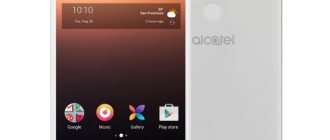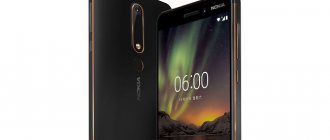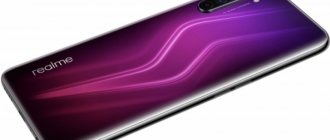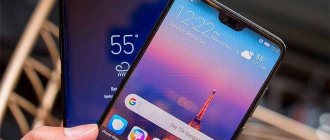Xiaomi is an example of dynamic short-term development, which some call a breakthrough. The Chinese brand began developing phones in 2011, and based on the results of 2021, it came out on top in Russia in the import and sale of smartphones. Reasons for popularity:
- extensive production facilities owned by the company make it possible to reduce the cost of production of spare parts and assembly of finished devices;
- the allocation of funds for a “think tank” of engineers and developers contributes to the release of high-tech new products at a high pace;
- loyalty to distributors and thoughtful marketing policies make Xiaomi smartphones friendly for both buyers and sellers;
- the low price of devices in comparison with competitors allows us to win the “battle” for the user over and over again.
The importance of the camera in Xiaomi smartphones
A gadget maker can improve various components of phones, focusing on long-lasting performance or a powerful processor. The products of the Chinese brand have enough of everything, with close attention paid to cameras.
Smartphone manufacturer Xiaomi pays close attention to improving cameras
The flagships of the Chinese manufacturer are distinguished by record-breaking cameras. But budget devices also show very decent results in terms of shooting quality. It’s no wonder that Xiaomi’s tactics are to release budget devices with impressive characteristics. At the same time, you need to be honest: a smartphone cheaper than 10 thousand rubles will have a good camera, but only in comparison with other budget devices. However, the low price compensates for this feature.
Table No. 1. Purpose of cameras in Xiaomi smartphones.
| Price segment | Camera resolution, MP | Purpose |
| Budget smartphones | From 8 to 13 MP | Amateur photography in the daytime in good lighting |
| Mid-priced devices | From 12 to 64 MP | Universal shooting with customizable parameters, including in the evening |
| Expensive smartphones and flagships | From 20 to 108 MP | Any shooting modes, the ability to create professional photos |
Not a wow camera
I'll start with the front camera. This is a feature of a smartphone, because it is hidden and not noticeable. Only attentive people will recognize it by the cut in the protective film glued to the screen.
This design move looks great, even if Xiaomi is not the first to figure out how to hide the front camera, losing out to ZTE.
The photo quality is so-so - by the standards of flagships, it turns out to be very average. But this is the price to pay for the “tubeless” look; I wouldn’t recommend this phone to selfie lovers.
The main camera is 108 megapixels, pictures by default come out in a relatively modest resolution, but this is more than enough for everyday life on social networks.
Optical stabilization and night mode do not help when shooting in low light - the results are below. Again, so-so for a flagship. During the day, of course, everything is fine.
The same can be said about the optional ultra-wide angle - nothing outstanding.
There is also a “periscope” module; it has a five-fold optical zoom with optical stabilization. It takes good pictures, but it doesn’t focus very quickly, so if you plan to photograph a child at competitions or a playground, you’ll have to get used to it.
These were photos in good lighting, but here are a bunch of photos in less ideal conditions:
In general, despite the stated characteristics, the quality of the camera is closer to an advanced middle class than to a flagship.
As for video, the smartphone records videos in 8K and 24 frames per second. Advanced stabilization is provided, then the output is only 1080p, but with a smoother picture - you can shoot handheld right on the go.
How to choose a smartphone with a good camera from Xiaomi
Making a choice in favor of Xiaomi phones means getting a device that is cheaper than that of competing companies, but not inferior to classmates in functionality and advanced hardware. True, the software of Chinese devices may sometimes not work correctly, which is caused by constant updating and modification of released firmware. By paying attention to a number of parameters, you can choose a model according to your taste, requirements and financial capabilities.
Screen diagonal
The trend towards increasing smartphone screen diagonal has gradually stabilized at the same level. What seemed like a portable TV ten years ago is now an average smartphone. However, there is a limit, after which it becomes inconvenient to use a smartphone - it turns into a small tablet, and this is a slightly different device. The diagonal of most modern devices lies within a fairly narrow range from 5 to 6.5 inches.
Most modern smartphones have a screen diagonal of 5 to 6.5 inches
Matrix technology
Today you can find two competing technologies in phones: IPS and AMOLED. They have fallen significantly in price in recent years and are actively installed even on budget-level devices. IPS is cheaper and more reliable, with better color rendition. On the AMOLED side there are deep blacks, an economical mode and fast response time.
Camera
The most important parameter in the current review. Simple devices are equipped with a single camera, but more expensive products have long mastered a system of several optical-electronic modules. The camera in a smartphone cannot be made completely universal - this would require introducing a variable focal length, and this would turn the camera phone into a camera with the ability to communicate through cell towers. Suffice it to recall the example of the Samsung Galaxy S4 Zoom, which remained at the stage of a small-scale model.
Thanks to powerful processors and large amounts of RAM, modern phones are equipped with multiple lenses to take different shots.
The solution was found in installing several lenses with different characteristics. One is suitable for panoramic shooting due to its wide angle, the other is for capturing portraits, and the third is for capturing in macro mode. Sometimes all three or four lenses work together in an HDR scheme, and the resulting images are superimposed on each other to form the final best image. All this became possible thanks to new powerful processors and a large amount of RAM.
CPU
In Xiaomi smartphones you can find two types of multi-core computing systems: Snapdragon and MediaTek. The older the model (the higher the number in the index), the more productive it is, but it also drains the battery faster. Each processor has a large number of fans and opponents, so the user usually chooses a phone based on personal preferences.
RAM
Everything is simple here: the more it is, the better the smartphone will cope with various tasks. True, the amount of memory greatly increases the cost of the device. RAM is also closely related to processor power.
A smartphone with large RAM and a powerful processor will be able to cope better with various tasks.
Built-in memory
Manufacturers realized that using SD cards is not very convenient, and technology has made it possible to create compact and fast memory modules. And if two years ago the standard was 16 Gb, today there are clearly few of them - after all, a significant part is taken up by system files. It is believed that today the minimum comfortable ROM volume should be 64 Gb.
Battery
Experienced users sadly recall the ancient push-button Nokia, which held a charge for a whole week. But the battery capacity was then about 700 mA. Today, 3000 mAh is considered the minimum. Flagship and some mid-range models contain a 4-5 thousand mAh battery for longer operation of a powerful device.
Xiaomi smartphone lines
Everyone has long understood that Xiaomi has turned from a killer of iPhones into a killer of our nerves . Every month these hardworking guys release a new gadget, and each model comes out in several modifications at once, and its name may differ slightly in different countries. In short, to get at least a little orientation in the assortment, the easiest way is to understand the lines of Xiaomi smartphones:
- Redmi is the company's budget series of smartphones, which, by the way, brings in a considerable share of income, since it is harder to compete with the flagships from Samsung and Apple, but simple inexpensive phones are selling like hot cakes, especially since Xiaomi has really good ones: Redmi Note - Also budget phones, but with a larger screen , they cost a little more. The characteristics of processors, memory and resolution may be the same as those of Redmi, or they may be at a higher level;
- the most budget models have the letter A or C at the end of the model name. For example, Xiaomi Redmi 7A, Xiaomi Redmi 9C;
- Redmi S is also a cheap smartphone, but with a bright appearance, aimed at young people. The line has not been updated for a long time;
- X – prefix for Chinese versions.
- MI Se – simplified flagships with a more affordable price;
You can already get confused, can’t you? The company can be advised to simply divide all devices into three lines: budget, mid-range and flagship . In the meantime, we will do it for them and divide all Xiaomi smartphones in our rating into categories.
Voting: which Xiaomi is the best with a good camera?
Which Xiaomi smartphone with a good camera would you choose or recommend?
Xiaomi Mi A2 Lite
3.61 % ( 9 )
Xiaomi Redmi 7
3.21 % ( 8 )
Xiaomi Redmi S2
2.41 % ( 6 )
Xiaomi Redmi Note 2
1.61 % ( 4 )
Xiaomi Redmi Go
0.80 % ( 2 )
Xiaomi Mi 9T
9.64 % ( 24 )
Redmi Note 8 Pro
9.24 % ( 23 )
Xiaomi Redmi Note 8T
8.03 % ( 20 )
Redmi Note 7
2.81 % ( 7 )
Xiaomi Redmi 8
4.42 % ( 11 )
Xiaomi Mi Note 10
24.90 % ( 62 )
Xiaomi Mi CC9 Pro
9.24 % ( 23 )
Xiaomi Mi Mix 3 5G
2.01 % ( 5 )
Xiaomi Pocophone F1
8.03 % ( 20 )
The best Xiaomi smartphones with a good camera and battery
Don't want to sacrifice either the quality of your photos or the battery life of your smartphone? In this case, pay attention to the largest category of our review. Here we have collected 4 high-quality smartphones with excellent appearance, an attractive price tag and a premium build. Photos, videos, games, the Internet - all these and other tasks are not a problem for all the devices described below.
- Which Xiaomi smartphone is best to buy in 2021? Xiaomi phone rating
Xiaomi Mi 10T Pro 8/128GB
Perhaps the right to top our TOP of the best Xiaomi smartphones with a powerful battery and a good camera should have been given to Mi 11. But its cost is still quite high, and perhaps only loyal fans of the brand will pay that kind of money for a new product. But Mi 10T Pro for 44 thousand rubles in the 128 GB version is a much more attractive choice. In addition, its capabilities will still be sufficient for most buyers.
The Snapdragon 865 processor with Adreno 650 video accelerator and 8 GB of RAM can easily handle any task, be it top games or heavy applications. The owner will also be pleased with the luxurious IPS display: no PWM, excellent color rendition, brightness reserve for a sunny day and a refresh rate of as much as 144 Hz! The main camera with a 108 MP module is also cool. Moreover, she not only takes gorgeous pictures, but also writes videos in 8K.
Advantages:
- great sound;
- very good display;
- performance;
- quality of all cameras;
- video recording at 960 fps;
- design and excellent assembly;
- side fingerprint scanner;
- excellent autonomy.
Flaws:
- The proximity sensor does not always work correctly.
Xiaomi Poco X3 NFC 6/128GB
The TOP continues, perhaps the most popular smartphone model for 2021 in the mid-price category. This device has become one of the best-selling Xiaomi smartphones. Why did Poco X3 interest users so much? First of all, great price. Secondly, very decent cameras and stereo speakers. Thirdly, a very good screen with a diagonal of 6.67 inches and, importantly, a scan rate of 120 Hz!
To save money, you can buy a smartphone on Chinese sites, taking advantage of periodically appearing discounts and special offers.
Poco X3 has practically no competitors for the same money. Of course, this Xiaomi smartphone with a good 5160 mAh battery also copes well with games. In order for the phone to run top titles with a high refresh rate, the company chose a modern Snapdragon 732G gaming chip with an Adreno 618 graphics core, supplemented it with 6 GB of RAM and 128 GB of storage (hybrid flash drive slot).
Advantages:
- matrix refresh rate 120 Hz;
- stability of the system;
- charging time;
- gaming performance;
- high-quality stereo speakers;
- good main camera;
- instant operation of the fingerprint sensor;
- very decent front camera;
- moisture protection according to IP53 standard.
Flaws:
- Camera performance in poor lighting.
Xiaomi Redmi Note 9T 4/64GB
If you can’t decide which phone to buy on a limited budget, then take a closer look at the Redmi Note 9T. This is an affordable but very interesting smartphone. It uses the Dimensity 800 processor from MediaTek, which outperforms the Snapdragon 732G in terms of performance. Unfortunately, there is only 4 GB of RAM, but in most cases this is enough to prevent applications from being unloaded from memory.
- Meizu m6 note (Meizu m6 note) review and specifications
The main camera in Redmi Note 9T is of average quality. It consists of 3 modules: the main one with a resolution of 48 MP, a 2 MP depth sensor and a useless 2 MP macro. In conditions of lack of light, the pictures are noisy, but during the day you can get high-quality photos with a smartphone. It’s nice that one of the cheapest smartphones from the Xiaomi brand is not without an NFC module and an infrared port characteristic of the series.
Advantages:
- high-quality display;
- good autonomy;
- IR port and NFC module;
- scanner location;
- good video recording;
- decent sound.
Flaws:
- no macro camera needed;
- brightness sensor operation.
Best Xiaomi gaming smartphone
Xiaomi Black Shark 3
- screen 6.67”, resolution 2400*1080;
- processor – 8-core Snapdragon 865;
- RAM 8/12 GB, main memory – 128/256 GB;
- main camera – 64+13+5+2 MP, front – 20 MP;
- battery 4720 mAh;
- NFC - no;
- dimensions 77.3*168.7*10.4 mm, weight 222 g;
- price from 37,500 rubles.
A smartphone for gamers, and that says it all. It is optimized for both indoor and outdoor gaming. An interesting design can be seen in the picture; there are logos on the back panel, the color of which can be changed from the menu , and this can be a gradient, blinking, etc. In short, it was done beautifully and originally. The screen is large, made using AMOLED technology, without cutouts. HDR10 and Always On Display are in place. The screen refresh rate is 90 Hz (it could be 120 Hz), but the response speed is very high , the screen recognizes the pressure applied. The fingerprint scanner is hidden under the display.
A top-end processor with cooling is installed, good RAM – LPDDR4X in the 8 GB version and the coolest LPDDR5 – in the 12 GB version. The trick is that instead of MIUI there is JoyUI , which differs slightly in some elements and design. At the end of the smartphone there is a switch that activates the gaming space , where you can easily configure processor and screen settings, connect accessories, etc. The camera and battery in the model are excellent, there is fast charging at 65 W ( full battery in 38 minutes ). There is 18W wireless charging The main disappointment is the lack of NFC. Eh, this would be perhaps the best gaming smartphone on the market.
pros
- cool design;
- powerful processor with cooling;
- thoughtful gaming space;
- a lot of memory;
- headphone output;
- stereo sound;
- scanner under the display;
- very fast charging;
- wireless charging capability;
- NFC, 5G.
Minuses
- screen refresh rate 90 Hz;
- no slot for memory cards;
- no IR port;
- no NFC.











